Performance Summary
Non-3D benchmark scores (2D) are identical to the MSI GD-65.
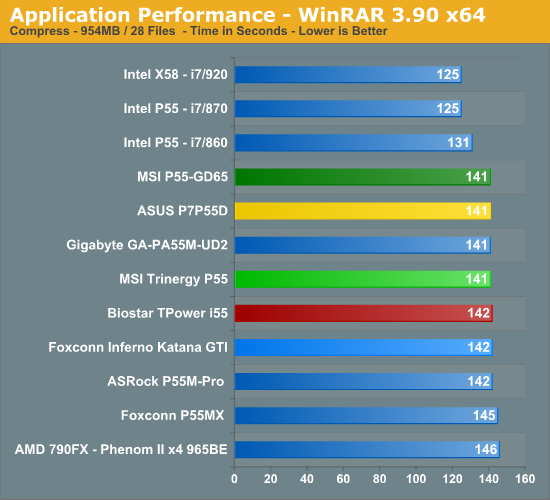
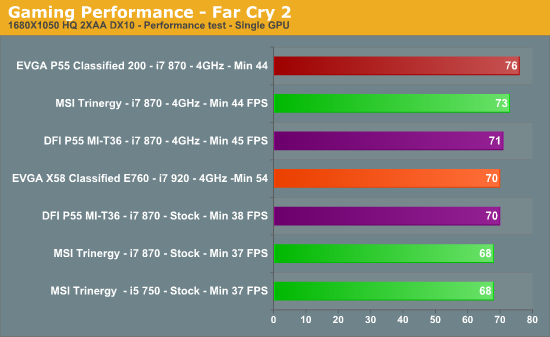
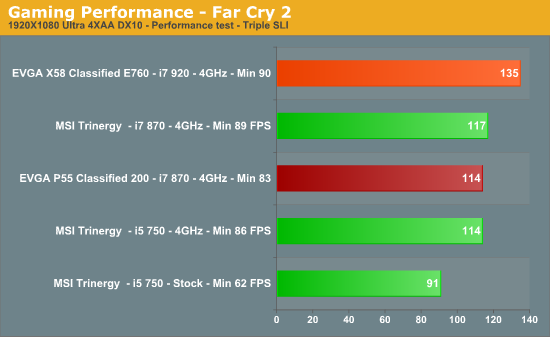
Triple card performance with GeForce 275 does show scaling on P55, but as expected, X58 pulls ahead in certain situations.
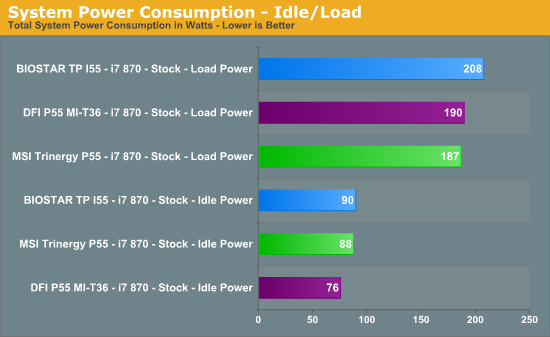
For this test we measured AC power consumption from the wall while using the same set of components on all boards. All power saving features were turned on, with OS software installed where necessary to give maximum power saving at stock operating frequency on our i7 870 CPU. Real power consumption will probably be a few percent lower than what the AC wall meter reports but as we're going apples to apples here, the percentage of change is the important factor.
MSI's power saving features and software turn in class leading performance under heavy load. This is impressive considering the Trinergy has the NF200 in tow. However, we doubt anyone purchasing this board is overly interested in saving a few watts of power.
Overclocking
There are no real changes here either; these CPUs hit the same speeds on almost all P55 boards we have tested to date.
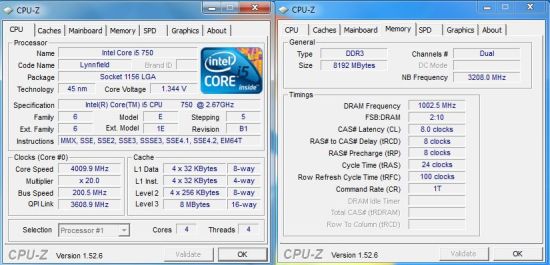

8GB memory over 1600MHz+ is made a little tricky on MSI boards once you select the "Advanced" DRAM timings menu. All sub-timings must be changed manually by the end-user as frequency is increased. Other vendor boards from the likes of ASUS, BIOSTAR, Gigabyte, and EVGA don't have this problem and it would be nice if MSI would follow suit.
Our 750 retail CPU is frequency limited between 4~4.1GHz unfortunately, and it seems no board can extract anything further from this processor regardless of tinkering with settings. Our 870 can go over 4.2GHz if cooling permits but we think 4.2GHz is more than enough. Both processors needed around 1.39VTT to hold 8GB of memory at 2000MHz. VCore for both processors was set to around 1.37V under full load, while VDIMM was set to 1.65V. All other rail voltages were left at defaults and did not affect stability in any way.
One thing to note, MSI needs to work on their Vdroop function in BIOS. With Vdroop enabled, the voltage sag is ridiculous; we measured around 0.15V between the set voltage and full load voltage. Given the fact MSI are using an over-engineered PWM circuit, we think this figure can be reduced substantially. If you disable Vdroop, the voltage actually rises somewhat under full load conditions by around 0.03V or so, which is something to take note of.
Once you get your head around the current BIOS quirks, the board is perfectly stable. S3 resume also worked fine (215+ BCLK), which is good news for those of you that utilize sleep states.










12 Comments
View All Comments
Rajinder Gill - Wednesday, December 23, 2009 - link
The conclusion is all on the first page (just read the OVERVIEW/CONCLUSION section), just as it was in the MSI GD-65 and BIOSTAR TPOWER i55 reviews.Rajinder Gill - Wednesday, December 23, 2009 - link
The conclusion is on the first page, just as it was in the MSI GD-65 an BIOSTAR TPOWER i55 reviews.Later